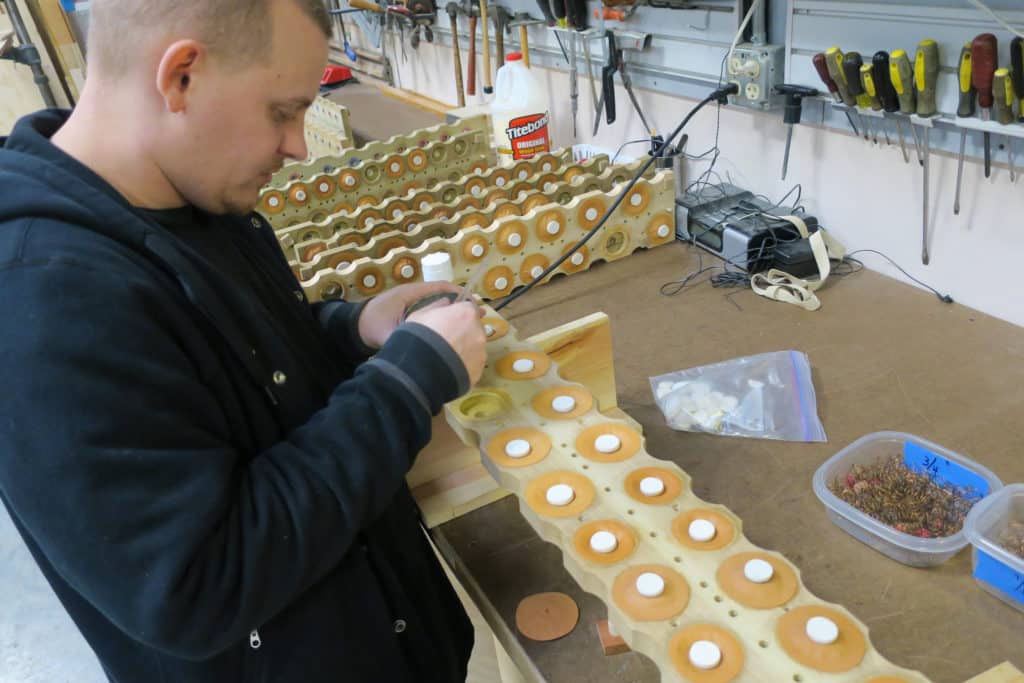Owning and playing a pipe organ is certainly a rewarding experience which allows you to produce rich and beautiful music. However, these grand instruments do take a good deal of maintenance in order to keep them in great condition and make sure that they maintain the same rich sound that they are meant to produce. One service that is an essential component of pipe organ restoration is the process of re-leathering. If you are new to the world of pipe organs, keeping up with all of the maintenance and knowing when services need to be provided can become confusing and overwhelming. So, here is a little guide to knowing when your pipe organ needs re-leathering, and the benefits of this service.
What is Re-Leathering?
An important part in keeping up with the maintenance of your organ is being able to understand the services that are offered to keep your instrument in great shape. In this case, re-leathering is a very important service to know about. Every pipe organ contains bellows, which are composed of leather. “As leather ages it becomes brittle, causing bellows to leak and eventually blow-out,” which is where re-leathering comes in. This restoration process includes the use of tanned leathers (attached is a list of various types of leathers used in pipe organ components) , high quality canvas, rubber cloth etc. in order to apply new belts and corner pieces with hot glue to your instrument. In addition to the bellows, your organ’s wooden pipe stoppers may also require re-leathering in order to guarantee tuning stability. If you have an electro-pneumatic instrument, its leather pouches and pneumatics may also require re-leathering.
Why should I re-leather my organ?
If you are an organist, you are well aware of the outlay needed to purchase a traditional pipe organs are to begin with, often making it the second largest physical asset for a church after the physical/building structure of the church itself. The process of re-leathering your organ will extend the life of your organ, ultimately making your purchase more worthwhile and, of course, allowing you to play it longer! Re-leathering will ensure that a stable supply of wind is provided from the blower motor to wind chests and other components. Why would you not want to have your pipe organ re-leathered when it will greatly benefit the quality of sound, extend the life of your instrument, and make your purchase more worthwhile?
How do I know when my organ needs re-leathered?
There are several ways for you to tell that your organ is due to be re-leathered. Over time, the leather gets worn and tears causing a blowout/leak in the reservoirs/ bellows i.e. the lungs of the instrument. If not taken care of, your wind system will eventually give way. You might notice loud wind leaks, drastic drops in the organ’s pitch and volume, or, in extreme cases, your organ may just quit responding altogether. These are all signs that re-leathering would be a wise choice for your instrument in order to fix the issues you are experiencing. The longevity of leather ( as an organic material) is also impacted by micro-climate conditions inside the organ chambers, the quality of leather and/or glue used in a custom build or repair and the quality of workmanship.
For an estimated time frame on how often re-leathering should be necessary: the leather will last about 40 to 50 years in most cases.
If the thought of having your organ re-leathered seems daunting, have no fear! These problems are quick and affordable to repair, and the process of re-leathering will end up providing great benefits in the long run.
So, if you think your organ may need re-leathered, consider contacting a pipe organ company with experience in this restoration process, and get your pipe organ back in shape!




